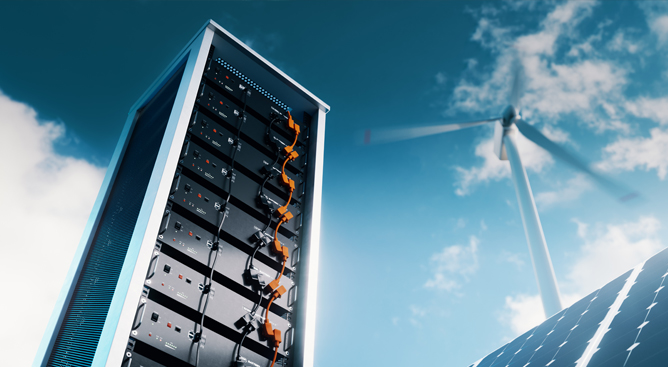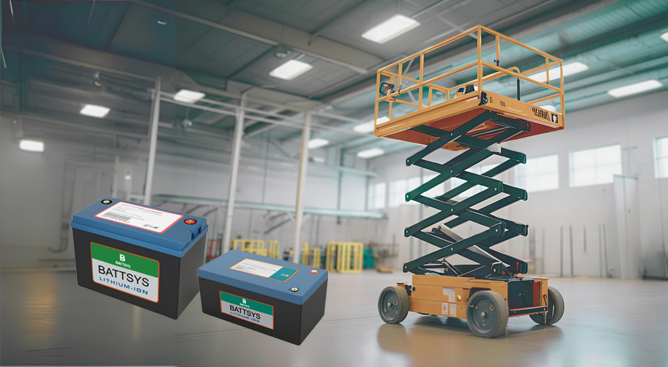Energy storage lithium battery compared to power lithium battery.
What is the difference between energy storage lithium batteries and power lithium batteries? How to choose these two lithium-ion batteries based on practical applications? This article will provide a detailed comparison and explanation of the definitions, scope of use, management systems, and types of battery cells between the two, to help everyone better distinguish, choose, and use them.
1) Definition of Energy Storage Lithium Battery and Power Lithium Battery
Energy storage lithium battery: It is a type of secondary lithium battery that uses a carbon material as the negative electrode, a lithium containing compound as the positive electrode, and a non-aqueous electrolyte solution. Common examples include lithium iron phosphate batteries.
Power lithium battery: Power lithium battery refers to the battery that provides power for transportation vehicles. Generally, compared to small batteries that provide energy for portable electronic devices, it is mainly used as a power storage battery for electric vehicles, electric trains, electric bicycles, and golf carts.

2) The difference between the two
The definitions of power batteries and
energy storage batteries are relatively broad. In terms of application, which category do you refer to. Energy storage batteries generally have low current and belong to the energy type, while power batteries generally need to be able to discharge 3C. The discharge capacity, discharge curve, and plateau can be compared through 3C discharge or 1.5C discharge. Price estimate: For the same specifications, the former is 1.2 times higher than the latter.
◆ Different internal resistance of batteries
The internal resistance of power batteries with the same capacity is lower than that of energy storage batteries
The total amount of batteries varies
The weight of a power battery with the same capacity will be heavier than that of an energy storage battery (due to different design processes)
◆ Different prices
The price of power batteries will be more than 1.5 times higher than that of energy storage (depending on different customer requirements)
◆ Different usage scope
Energy storage lithium batteries are used in low current devices (usually within the discharge range of 0.5-1C), such as power storage stations, mobile communication power sources, new energy storage power sources, aerospace military power sources, solar power generation equipment, and wind power generation equipment.
Power lithium batteries are generally used in equipment that requires high current discharge (3C-5C)
The automotive and motorcycle industry mainly provides electrical energy for engine ignition and the use of onboard electronic devices;
Industrial power system, used for transmitting and transforming power stations, providing closing current for power units, providing backup power for public facilities, and communication power supply;
The electric vehicle and electric bicycle industry, replacing gasoline and diesel, mainly includes new energy vehicles as driving power sources for electric vehicles or electric bicycles.
The hardware logic structure of the energy storage management system is different
Energy storage management system for lithium batteries: The energy storage system has a huge scale, and the hardware generally adopts a two-layer or three-layer mode. For larger scale systems, a three-layer management system is preferred.
Power lithium battery energy storage management system: The power battery system is located on a high-speed electric vehicle, and has higher requirements for the battery's power response speed and power characteristics, SOC estimation accuracy, and the number of state parameter calculations. There is only one centralized layer or two distributed layers, and there is basically no situation of three layers. Small cars mainly use a centralized battery management system with one layer, and currently there are few distributed power battery management systems with two layers.
◆ Different types of lithium battery cells are used

Energy storage lithium batteries mainly use lithium iron phosphate cells, because lithium iron phosphate batteries are superior to other batteries in terms of safety, environmental protection, volume, weight, and other aspects. Lead acid batteries and lead carbon batteries are also used in some energy storage power plants.
The current mainstream battery types for power lithium-ion electric vehicles are lithium iron phosphate batteries and ternary lithium batteries, which have more choices and are not very stable in terms of safety.
◆ Different capacity and volume requirements
Energy storage lithium batteries are mainly used to provide power and require the ability to output high power. Lithium battery pack has a small volume and light weight. The energy density of lithium batteries is 3-4 times that of lead-acid batteries, 2.5 times that of nickel cadmium batteries, and 1.8 times that of nickel hydrogen batteries.
Power lithium batteries are mainly used for energy storage, with high capacity requirements, long lifespan requirements, and low self discharge. The capacity of electric tool batteries is not large and does not require high power output.
◆ Different ranges of current usage
Power lithium batteries are generally used in devices that require high current discharge (3-5C), and have relatively little damage to the battery. Energy storage lithium batteries are used in low current devices (usually within the discharge range of 0.5-1C), where C refers to the charge discharge rate, which is a measure of the speed of discharge. Generally, the capacity of a battery can be detected by different discharge currents. For example, when a battery with a capacity of 100Ah is discharged at 15A, its discharge rate is 0.15C.

